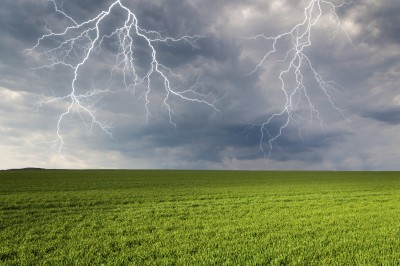






Spring and summertime is gardening time, and the hot days of summer herald storm season in most climates across the country. It’s important to know about keeping safe in the garden during a lightning storm; dangerous weather can pop up with very little warning, and gardens and lightning can be a very bad combination. Read on to learn more about lightning safety out in gardens.
Although lightning storms are fascinating to watch, they’re extremely dangerous. Studies indicate that 240,000 people around the world are injured by lightning every year, and 24,000 people are killed.
The National Oceanographic and Atmospheric Administration (NOAA) reports that the United States averages 51 deaths due to lightning strikes every year. Keeping safe in the garden, or in any outdoor environment, should always be taken seriously.
Here are some tips for keeping safe in the garden, especially when storms are imminent.
Garden Statues and Fountains in Monasteries
Garden Sculpture and Garden Fountains in Roman Gardens
Estheticly Pleasing Water Gardens And Pools
Identifying Flowers: Learn About Flower Types And Inflorescences
What Is A Native Plant: Learn About Native Plant Benefits In The Garden
Praying Mantis Egg Sac Info: Learn About Praying Mantis In The Garden
Butterfly Garden Feeding: How To Feed And Water Butterflies In Gardens
Copyright © www.100flowers.win Botanic Garden All Rights Reserved